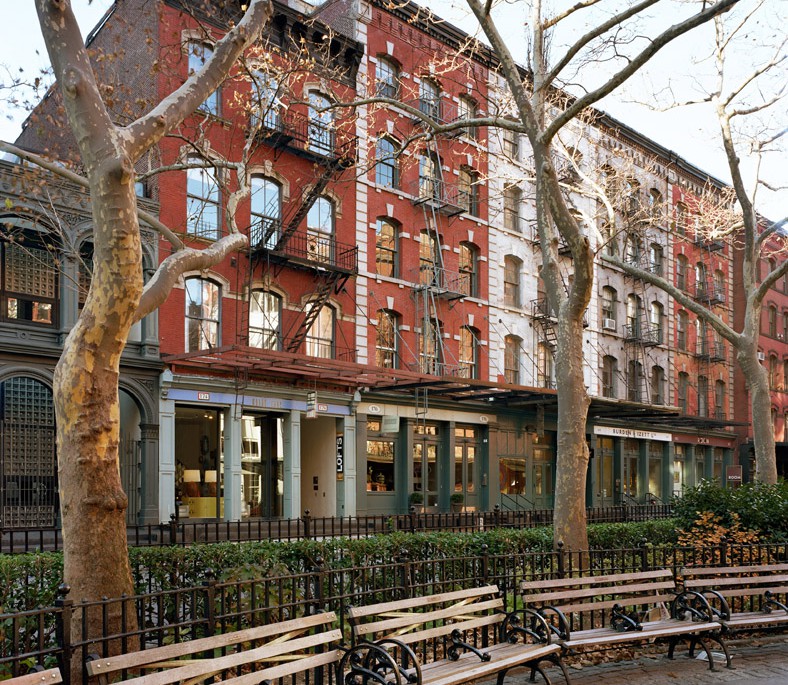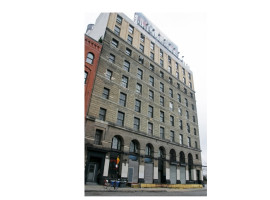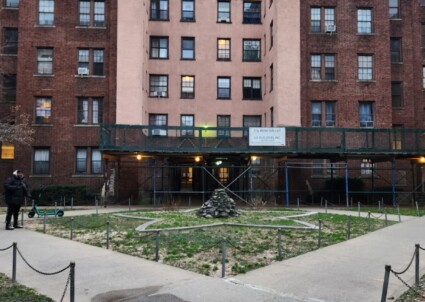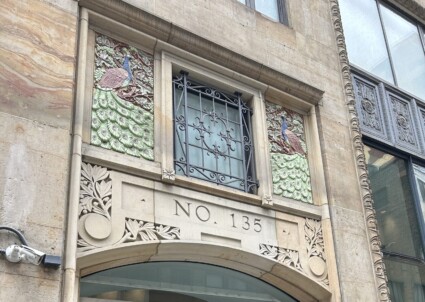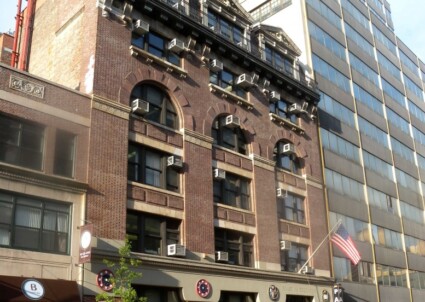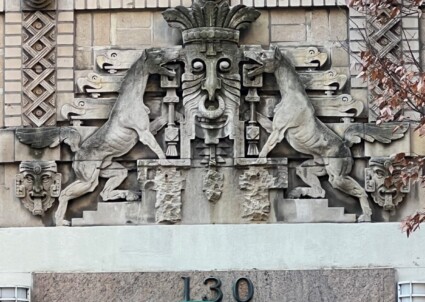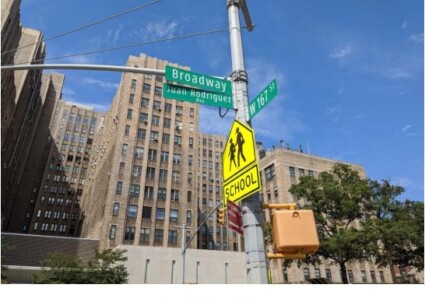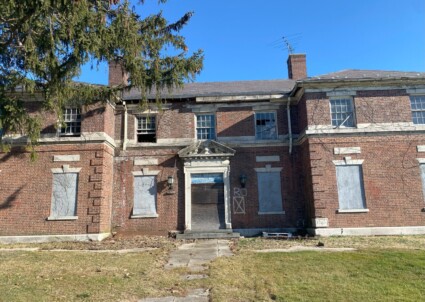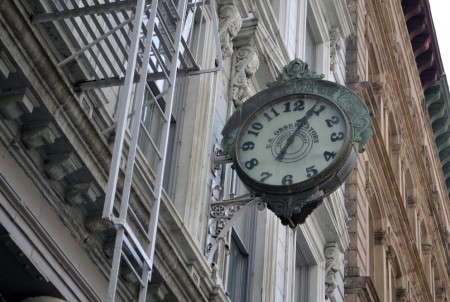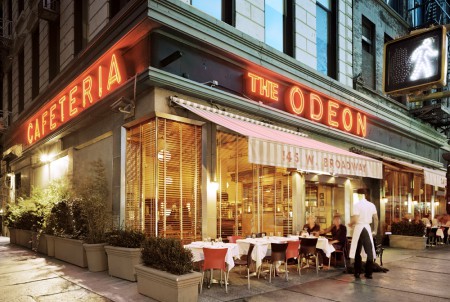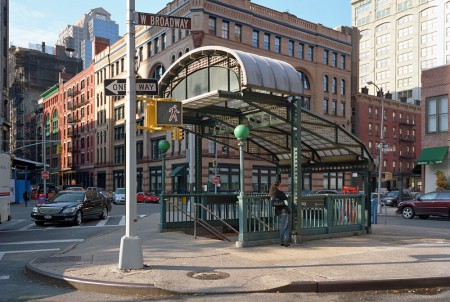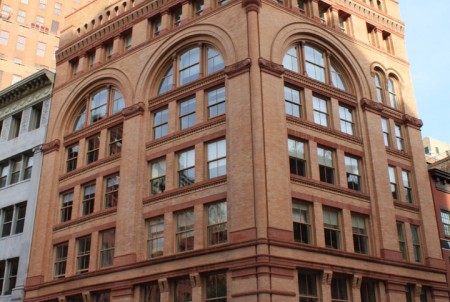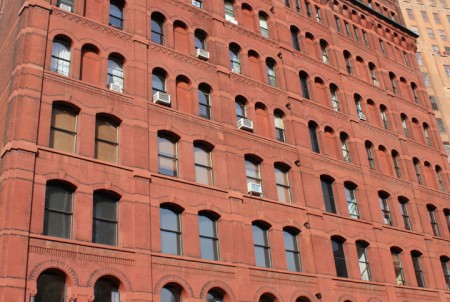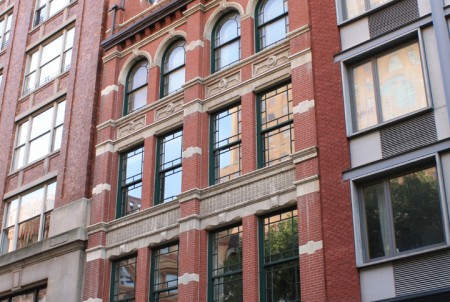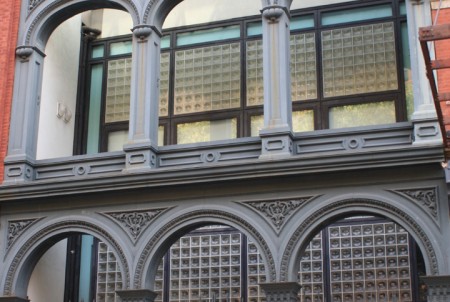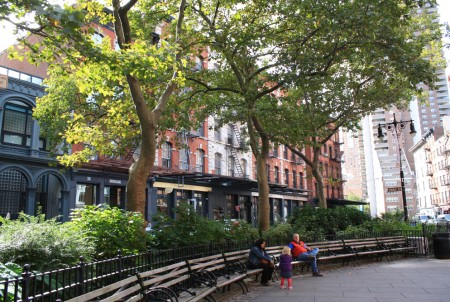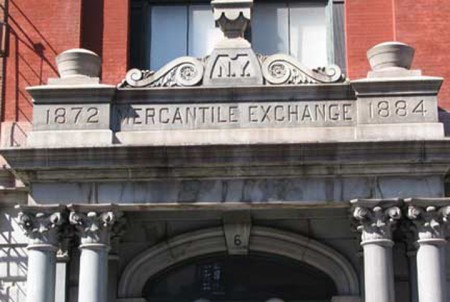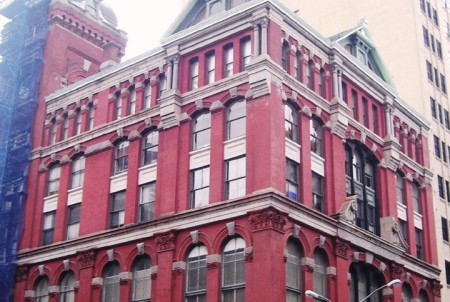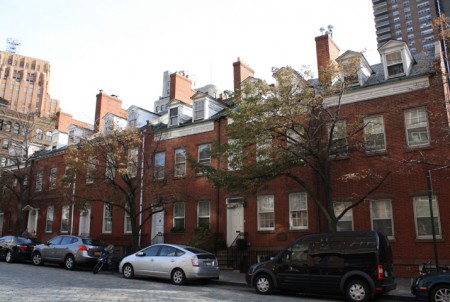Tribeca, Manhattan
The area now known as Tribeca was originally developed in the early 19th century as a residential neighborhood close to the city’s center in Lower Manhattan. Its street grid was laid out at right angles off of Greenwich Street and on a diagonal off of Broadway, creating blocks of different lengths and irregular open spaces. The residential character of these blocks allowed for the retention of small lot sizes in future waves of development, thus creating a neighborhood with richly textured streetscapes of varying styles of architecture. After the Civil War, shipping hubs moved from the East River to the North River (later renamed the Hudson River), and South Street Seaport was traded in for steam-powered shipping on the west side via long piers. With a newly thriving industrial waterfront, the neighborhood was poised for change.
Around 1812, Washington Market was established on the streets from Fulton to Vesey and Washington to West (near the current site of the World Trade Center). The market grew considerably between 1812 and the middle of the century, becoming the city’s major source for consumables. Hundreds of vendors sold all manner of imported and locally made goods and produce to store owners, restaurateurs and home cooks alike. The growth of the market was, no doubt, fueled by the shipping industry on the river nearby, facilitating the transfer of goods. The market moved to Hunts Point in The Bronx in 1967 and the World Trade Center was developed shortly thereafter. Washington Market Park, located at Greenwich Street between Duane and Chambers Streets and designed by Lee Weintraub in 1978, was named after the historic market.
With the combination of a bustling industrial waterfront and thriving commerce, the Federal and Greek Revival residential buildings north of the market were transformed into food storage warehouses and over the course of the rest of the 19th and into the 20th century, the majority of these would be replaced entirely with store and loft buildings and warehouses. This architectural development, which spanned roughly 50 years from 1860 to 1910, encompasses a balance of utilitarian and decorative forms in a range of popular styles of the period, all while defining the identities of the enterprises housed within and the expression of American commercialism as a whole. These buildings still dominate the character of the neighborhood today.
Originally referred to as the “Lower West Side”, there are differing accounts as to where the name “Tribeca” came from. It originated in the 1970s, after a Special Lower Manhattan Mixed Use District was adopted for the area south of Canal Street, between Broadway and West Street. A realtor, advertising real estate within the new district, referred to it as Tribeca, which stood for the Triangle Below Canal. Most likely, the realtor hoped to inspire a similar transformation to that of Soho, whose industrial buildings had been converted into artists’ lofts and trendy apartment buildings. Four historic districts were designated in 1991-92: Tribeca East, Tribeca West, Tribeca North and Tribeca South, which was extended in 2002. These are located in Tribeca’s center, while pockets around the historic districts and most of the neighborhood’s periphery remain unprotected. Community members are currently advocating for more individual landmarks and expansion of the historic district borders.
